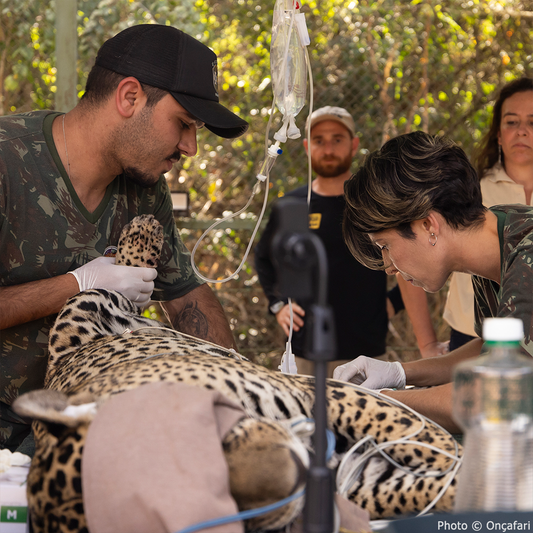Drugs in Our Ecosystems Put Wildlife and Aquatic Species Under Siege
Matthew Russell
Photo: Pexels
The growing reliance on pharmaceuticals in modern society has unseen consequences on the environment and wildlife. Drugs, designed for human benefit, persist in our ecosystems, causing significant harm to aquatic and terrestrial organisms.
The problem, often unnoticed, requires urgent attention and innovative solutions to mitigate its effects.
 Photo: Pexels
Photo: Pexels
Pharmaceuticals contaminate waterways, posing a serious threat to aquatic life.
Unseen Contaminants in Our Waterways
Pharmaceutical residues have become ubiquitous in the environment. These contaminants originate from several sources, including improper disposal of medications, agricultural runoff, and wastewater from pharmaceutical manufacturing plants. In particular, aquatic environments suffer from continuous exposure to these pollutants, which can have devastating effects on wildlife.
Studies have shown that pharmaceuticals enter aquatic systems through wastewater treatment plants, where they are not fully removed. This results in the presence of these bioactive compounds in rivers, lakes, and streams, posing a risk to aquatic life.
According to the United States Environmental Protection Agency, aquatic organisms, including fish, invertebrates, and amphibians, are particularly vulnerable because they live in the contaminated water and are exposed continuously throughout their lifecycle.
 Photo: Pexels
Photo: Pexels
Wastewater treatment plants fail to remove all pharmaceutical residues.
Behavioral and Physiological Impacts on Aquatic Wildlife
The effects of pharmaceuticals on aquatic organisms are well-documented. For instance, exposure to antidepressants has been shown to alter the behavior of fish, making them less cautious and more susceptible to predators, according to a study published in Environmental Evidence.
Additionally, endocrine-disrupting chemicals in these drugs can lead to reproductive issues, such as the feminization of male fish, the EPA reports, which can result in population declines and even local extinctions. In one striking example, brown trout have been observed developing addictive behaviors when exposed to methamphetamine in waterways.
This alteration in behavior highlights the profound impact that pharmaceuticals can have on wildlife, reports The Guardian. Such behavioral changes can disrupt ecosystems, affecting predator-prey dynamics and the overall health of aquatic communities.
 Photo: Pexels
Photo: Pexels
Advanced treatment methods can remove up to 95% of pharmaceutical pollutants.
Terrestrial Wildlife Also at Risk
While much of the research has focused on aquatic environments, terrestrial wildlife is not immune to the effects of pharmaceutical pollution. Livestock medicated with various drugs can excrete these compounds into the environment, which then accumulate in the soil and water systems. This can lead to the contamination of crops and further exposure to wildlife that relies on these resources, Mongabay reports.
One of the most tragic examples is the near-extinction of vulture populations in India, caused by diclofenac, a non-steroidal anti-inflammatory drug used in livestock. A study published in Philosophical Transactions of the Royal Society B shows how the vultures ingested the drug by feeding on the carcasses of treated cattle, leading to widespread kidney failure and death.
The Need for Advanced Wastewater Treatment
The technology to mitigate this pollution exists, but its implementation is inconsistent. Advanced treatment methods can remove up to 95% of pharmaceutical contaminants from wastewater. However, the high cost and energy requirements of these systems make them less accessible, especially in developing countries, Mongabay reports.
Improving wastewater treatment infrastructure globally is crucial to reducing pharmaceutical pollution. Policymakers and environmental managers must prioritize investments in advanced treatment technologies and enforce stricter regulations on pharmaceutical waste disposal.
Additionally, public awareness campaigns can educate individuals about the proper disposal of medications to prevent them from entering the environment.
 Photo: Pexels
Photo: Pexels
Terrestrial animals are exposed to drugs through contaminated food and water.
Designing Greener Pharmaceuticals
To address the root cause of pharmaceutical pollution, the pharmaceutical industry must reform the design and production of drugs. Developing greener pharmaceuticals that break down more easily after use can significantly reduce their environmental impact. As The Guardian reports, this requires collaboration between scientists, drug manufacturers, and regulatory bodies to ensure new drugs are both effective and environmentally friendly.
The impact of pharmaceutical pollution on wildlife and ecosystems is a growing environmental concern that demands immediate action. Both aquatic and terrestrial species suffer from exposure to these contaminants, leading to behavioral changes, reproductive issues, and population declines. Advanced wastewater treatment and the development of greener pharmaceuticals are essential steps toward mitigating this problem.
By prioritizing environmental health, we can protect our ecosystems and the diverse species that inhabit them. Click below and take action for the health of people and our planet!
Matthew Russell is a West Michigan native and with a background in journalism, data analysis, cartography and design thinking. He likes to learn new things and solve old problems whenever possible, and enjoys bicycling, spending time with his daughters, and coffee.




















